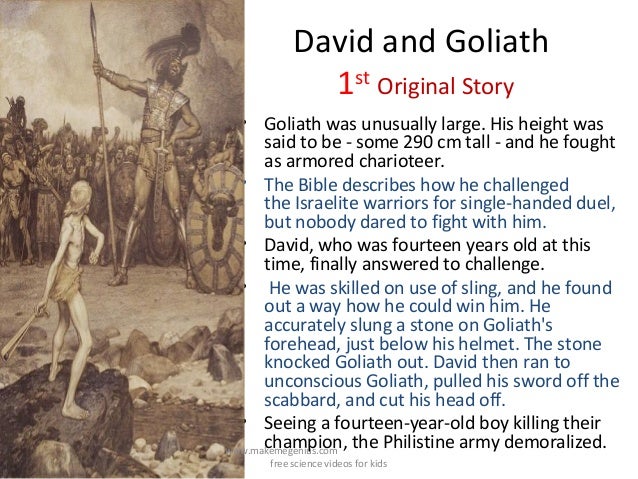In the landscape of contemporary literature, few narratives hold the allure and gravitas of the biblical parable of David and Goliath. Malcolm Gladwell’s “David and Goliath” delves into this rich tapestry, unraveling the complexities that underpin the perceived simplicity of the tale. It is a journey that transcends mere retelling; it invites readers to explore the tumultuous dynamics of struggle, advantage, and the very essence of what it means to be perceived as weaker. At its heart, Gladwell’s discourse addresses a common observation: that victory often resides in the most unexpected of places.
From the outset, Gladwell captures the reader’s attention, positioning the iconic narrative as a departure point for his ensuing exploration. He queries why the underdog story resonates so deeply within the human psyche. What makes the tale of a shepherd boy defeating a giant a symbolic touchstone for so many? Gladwell deftly posits that our fascination with this motif is not merely anecdotal – it points to an intricate interplay of perceived strength and actual dynamics that can shatter the glassy surface of conventional wisdom.
One of the initial premises that Gladwell introduces is the notion of ‘the advantages of disadvantages’. He asserts that what we often deem as weaknesses can serve as the bedrock for resilience, innovation, and ultimate triumph. Through a careful analysis of historical and contemporary events, he engenders a sense of intrigue as he lays bare the stark realism that often accompanies the underdog experience. For instance, in recounting the story of a basketball coach bolstered by unorthodox strategies against seemingly insurmountable odds, he unveils the underlying truth: those not constrained by conventional wisdom often forge paths that lead to unexpected victories.
Gladwell’s arguments are meticulously woven, laden with vivid illustrations that challenge entrenched perceptions. He invokes the example of both notable figures and ordinary individuals who have traversed pathways fraught with dogma. By distilling these experiences, he argues that the essence of struggle can catalyze remarkable transformation. However, he does not romanticize adversity. Instead, he coolly asserts that discomfort and tribulation can serve as foundational experiences, honing acumen in ways that privilege alone cannot.
Moreover, “David and Goliath” delves deeply into the dichotomy of the powerful and the seemingly powerless, artfully blurring the lines between the two. In several riveting anecdotes, Gladwell asserts that the giants may, in fact, harbor inherent vulnerabilities of their own. This juxtaposition tends to provoke thought: might the strong be shackled by their very power? Gladwell delves into the psychological ramifications of privilege, illustrating how those atop the socio-economic pyramid might become paralyzed by fear of failure or loss. This illuminating twist challenges readers to reconsider their preconceived notions about strength and vulnerability.
Each chapter pulls the reader further down the rabbit hole, revealing compelling intersections with sociology, psychology, and history. Gladwell employs an analytical prowess that makes his narrative both engaging and intellectually stimulating. He articulates the concept of ‘desirable difficulties’—those hurdles that, while daunting, compel growth and evolution. His examination of education systems, particularly the pressures of high expectations and the benefits of lower ones, serves as a microcosm for broader societal observations. Gladwell meticulously unravels the threads of context, revealing how misalignments in expectation can either galvanize or stultify potential.
As the narrative unfolds, Gladwell’s prose dances with erudition and accessibility. He extracts lessons from various settings—whether in the realm of sports, education, or innovation—transforming sometimes arcane concepts into digestible wisdom. He proffers that the capacity for resilience isn’t confined to the historically oppressed; rather, it can emerge from unlikely corners. This universality resonates not only with the experiences of individuals but also with societal constructs at large, hinting at a collective resilience hidden beneath superficial narratives of success and failure.
While Gladwell does an exceptional job of illustrating the complexity of challenges faced by the marginalized, he does not shy away from confronting the ethics of this dynamic. The exploration of what it truly means to fight against oppression is a recurring theme. It raises critical questions about responsibility, advantage, and the often ambiguous line between empowerment and exploitation. The reader is left pondering: when is the fight against Goliath justified, and how can that fight be conducted in a way that is both honorable and ethically sound?
Ultimately, “David and Goliath” is more than just an exegetical analysis of a well-worn story; it is an invitation to rethink the narratives that dominate our understanding of success. This examination leads readers to an introspective space where assumptions are challenged, and the intricacies of human experience are laid bare. It compels a reflection on not merely who holds power, but how that power is wielded; not merely who is perceived as the underdog, but what they have to teach us about strength in adversity.
In conclusion, Malcolm Gladwell’s “David and Goliath” is a masterclass in reimagining what it means to be disadvantaged. By intertwining diverse narratives with rich analytical insights, he cultivates a profound understanding of struggle that resonates deeply within the reader. In an age where the tales of giants and challengers are constantly redefined, Gladwell reminds us that the true essence of victory is often hidden in the shadows of what we deem insurmountable. Thus, it beckons all of us to consider our own narratives of strength and struggle, and how they might illuminate paths of unexpected triumphs yet to come.
